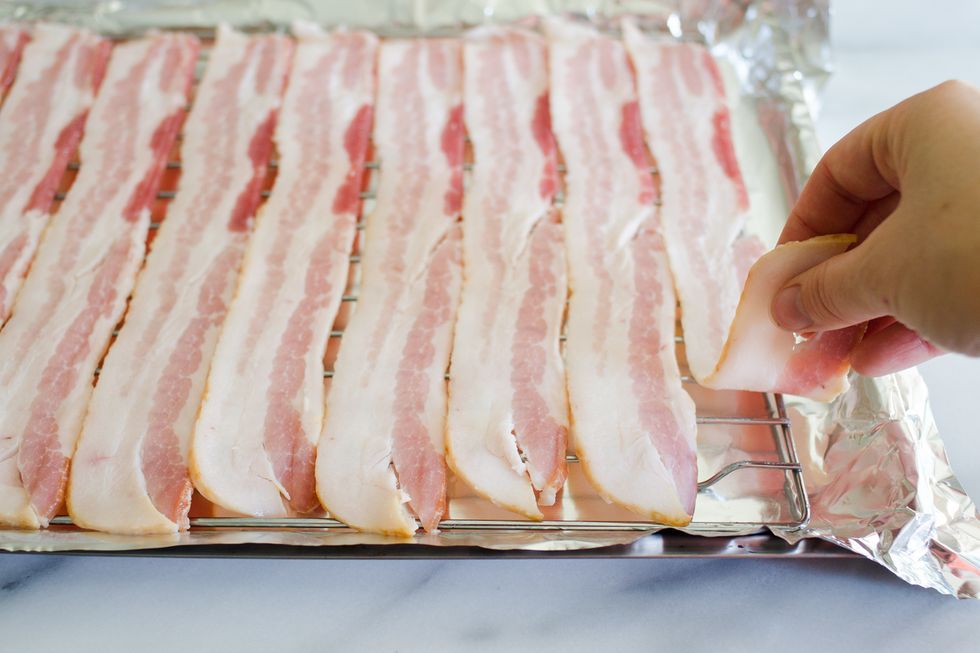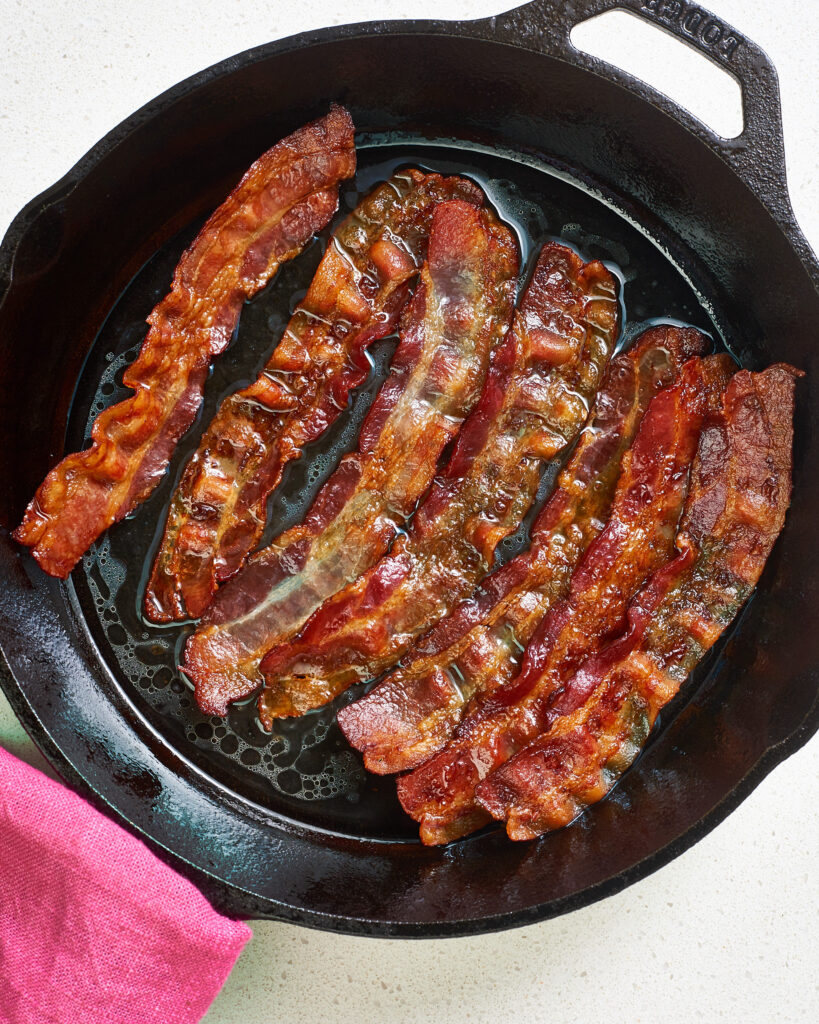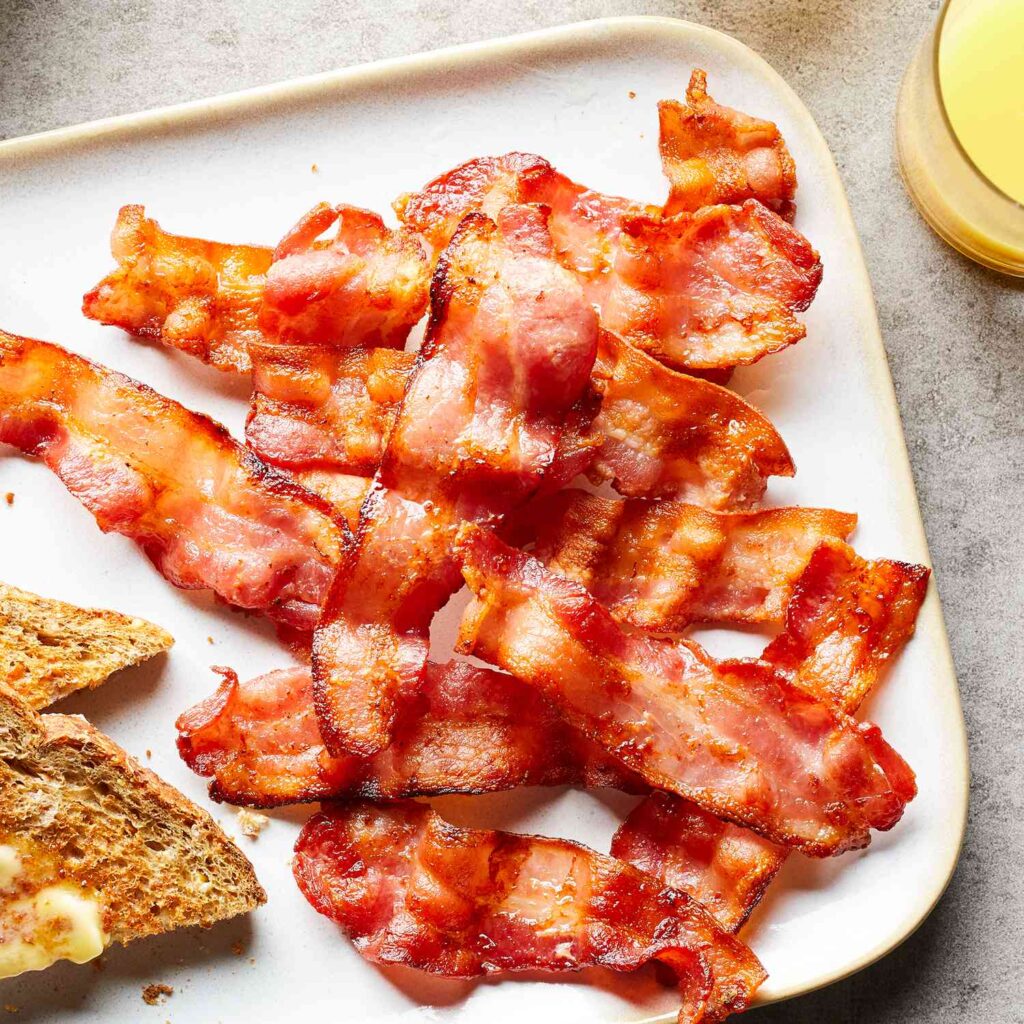
How to Cook Bacon: A Comprehensive Guide
Bacon is a type of salt-cured pork, typically made from the belly or back cuts of a pig. It is known for its rich, savory flavor and crispy texture when cooked. Here are the main points about bacon:
Origin and Types
Pork Belly: Most common type, particularly in the United States. This type is known for its streaky layers of fat and meat.
Back Bacon: Also known as Canadian bacon, made from the loin, and is leaner.
Pancetta: Italian-style bacon that is cured but not smoked, often rolled into a cylindrical shape.
Learn More Recipe: How To Cook Filet Mignon
Nutritional Information
Bacon is high in fat, particularly saturated fat, and also contains protein.
Due to its high sodium and fat content, it should be consumed in moderation.
Cooking bacon on the stove is a simple process that yields delicious, crispy results. Here’s a step-by-step guide:

Key takeaways for cooking bacon on the stove
Start with a Cold Skillet: Lay the bacon in a cold skillet to help it cook evenly.
Arrange Properly: Do not overlap the bacon slices. Cook in batches if necessary.
Cook on Medium Heat: Use medium heat to render the fat slowly and cook the bacon evenly.
Flip for Even Cooking: Flip the bacon after 5-6 minutes to cook both sides evenly.
Adjust Heat as Needed: Reduce heat if the bacon cooks too quickly or burns. Increase if it’s not browning.
Drain Excess Grease: Remove cooked bacon and place on paper towels to drain excess grease.
Serve Hot: Enjoy your crispy, hot bacon right away.
Learn More Recipe: How to Cook Lamb
Uses
Breakfast: Commonly served with eggs, pancakes, and toast.
Culinary Ingredient: Adds flavor to dishes like soups, salads, sandwiches, and pastas.
Topping: Bacon bits can be used on salads, baked potatoes, and more.
Tips:
For Even Cooking: Rotate the skillet occasionally to account for hot spots on the stove.
Managing Grease: Carefully pour off excess grease into a heat-safe container as you cook if it starts to pool too much in the skillet.
Cleaning Up: Let the skillet cool before cleaning. Pour the cooled grease into a container and wipe out the skillet with paper towels before washing.
Learn More Recipe: How to Cook a Roast Chicken
Ingredients:
Bacon slices
Equipment:
Large skillet or frying pan
Tongs or spatula
Plate lined with paper towels

FAQ:
What type of skillet should I use?
Use a large, flat-bottomed skillet or frying pan. A cast-iron skillet is ideal as it retains heat well, but non-stick and stainless steel pans also work.
Should I start with a cold or hot skillet?
Start with a cold skillet. This allows the bacon to cook more evenly and prevents it from curling.
Do I need to add oil or butter to the pan?
No, you don’t need to add oil or butter. Bacon has enough fat to cook itself.
What heat setting should I use?
Cook bacon on medium heat. This ensures the fat renders slowly and the bacon cooks evenly without burning.
How long should I cook the bacon?
Cook bacon for about 5-6 minutes on each side. Adjust the time based on the thickness of the bacon and your desired level of crispiness.
How do I flip the bacon?
Use tongs or a spatula to flip the bacon. This prevents burns and allows you to handle the bacon easily.
What if the bacon is cooking unevenly?
If some parts cook faster than others, rearrange the slices or rotate the skillet to distribute heat more evenly.
How do I manage excess grease?
Carefully pour off excess grease into a heat-safe container if it starts to pool too much. Let the grease cool before disposing of it properly.
What should I do with the cooked bacon?
Place cooked bacon on a plate lined with paper towels to drain excess grease before serving.
How can I prevent the bacon from curling?
Pressing the bacon down with a spatula occasionally can help keep it flat. Starting with a cold skillet also helps reduce curling.
What if I want my bacon extra crispy?
For extra crispy bacon, cook it slightly longer on medium-low heat to ensure it doesn’t burn while achieving the desired crispiness.
Can I add seasoning to bacon while cooking?
Bacon is usually already seasoned with salt during the curing process. However, you can sprinkle a little pepper, brown sugar, or other spices if desired, but do so sparingly.
Learn More Recipe: How to Cook Pork Tenderloin in Oven